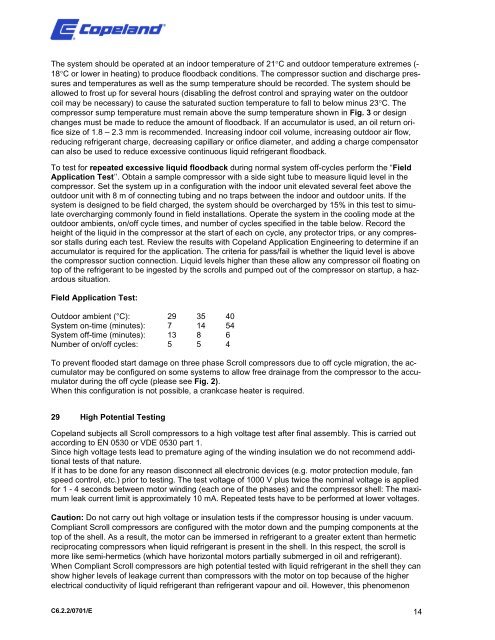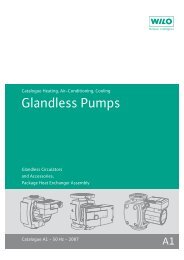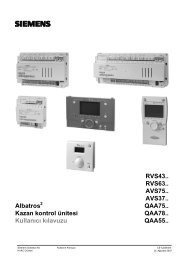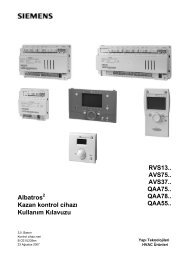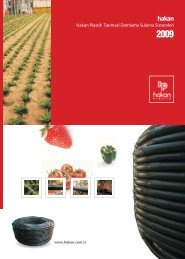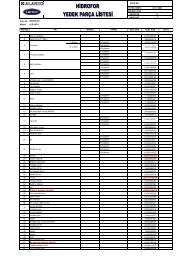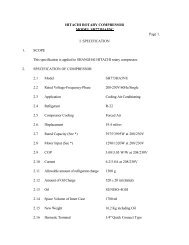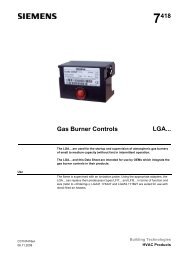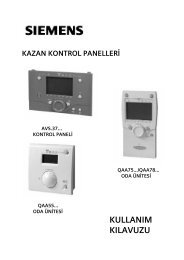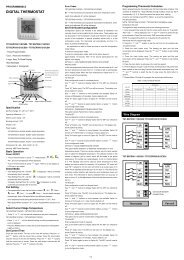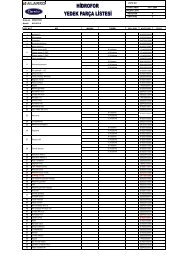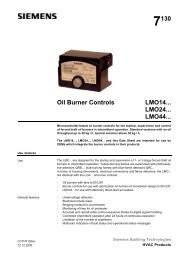A/C Scroll Compressors ZR 90 K4*.....ZR 300 KC*
A/C Scroll Compressors ZR 90 K4*.....ZR 300 KC*
A/C Scroll Compressors ZR 90 K4*.....ZR 300 KC*
You also want an ePaper? Increase the reach of your titles
YUMPU automatically turns print PDFs into web optimized ePapers that Google loves.
The system should be operated at an indoor temperature of 21°C and outdoor temperature extremes (-<br />
18°C or lower in heating) to produce floodback conditions. The compressor suction and discharge pressures<br />
and temperatures as well as the sump temperature should be recorded. The system should be<br />
allowed to frost up for several hours (disabling the defrost control and spraying water on the outdoor<br />
coil may be necessary) to cause the saturated suction temperature to fall to below minus 23°C. The<br />
compressor sump temperature must remain above the sump temperature shown in Fig. 3 or design<br />
changes must be made to reduce the amount of floodback. If an accumulator is used, an oil return orifice<br />
size of 1.8 – 2.3 mm is recommended. Increasing indoor coil volume, increasing outdoor air flow,<br />
reducing refrigerant charge, decreasing capillary or orifice diameter, and adding a charge compensator<br />
can also be used to reduce excessive continuous liquid refrigerant floodback.<br />
To test for repeated excessive liquid floodback during normal system off-cycles perform the “Field<br />
Application Test’’. Obtain a sample compressor with a side sight tube to measure liquid level in the<br />
compressor. Set the system up in a configuration with the indoor unit elevated several feet above the<br />
outdoor unit with 8 m of connecting tubing and no traps between the indoor and outdoor units. If the<br />
system is designed to be field charged, the system should be overcharged by 15% in this test to simulate<br />
overcharging commonly found in field installations. Operate the system in the cooling mode at the<br />
outdoor ambients, on/off cycle times, and number of cycles specified in the table below. Record the<br />
height of the liquid in the compressor at the start of each on cycle, any protector trips, or any compressor<br />
stalls during each test. Review the results with Copeland Application Engineering to determine if an<br />
accumulator is required for the application. The criteria for pass/fail is whether the liquid level is above<br />
the compressor suction connection. Liquid levels higher than these allow any compressor oil floating on<br />
top of the refrigerant to be ingested by the scrolls and pumped out of the compressor on startup, a hazardous<br />
situation.<br />
Field Application Test:<br />
Outdoor ambient (°C): 29 35 40<br />
System on-time (minutes): 7 14 54<br />
System off-time (minutes): 13 8 6<br />
Number of on/off cycles: 5 5 4<br />
To prevent flooded start damage on three phase <strong>Scroll</strong> compressors due to off cycle migration, the accumulator<br />
may be configured on some systems to allow free drainage from the compressor to the accumulator<br />
during the off cycle (please see Fig. 2).<br />
When this configuration is not possible, a crankcase heater is required.<br />
29 High Potential Testing<br />
Copeland subjects all <strong>Scroll</strong> compressors to a high voltage test after final assembly. This is carried out<br />
according to EN 0530 or VDE 0530 part 1.<br />
Since high voltage tests lead to premature aging of the winding insulation we do not recommend additional<br />
tests of that nature.<br />
If it has to be done for any reason disconnect all electronic devices (e.g. motor protection module, fan<br />
speed control, etc.) prior to testing. The test voltage of 1000 V plus twice the nominal voltage is applied<br />
for 1 - 4 seconds between motor winding (each one of the phases) and the compressor shell: The maximum<br />
leak current limit is approximately 10 mA. Repeated tests have to be performed at lower voltages.<br />
Caution: Do not carry out high voltage or insulation tests if the compressor housing is under vacuum.<br />
Compliant <strong>Scroll</strong> compressors are configured with the motor down and the pumping components at the<br />
top of the shell. As a result, the motor can be immersed in refrigerant to a greater extent than hermetic<br />
reciprocating compressors when liquid refrigerant is present in the shell. In this respect, the scroll is<br />
more like semi-hermetics (which have horizontal motors partially submerged in oil and refrigerant).<br />
When Compliant <strong>Scroll</strong> compressors are high potential tested with liquid refrigerant in the shell they can<br />
show higher levels of leakage current than compressors with the motor on top because of the higher<br />
electrical conductivity of liquid refrigerant than refrigerant vapour and oil. However, this phenomenon<br />
C6.2.2/0701/E 14


